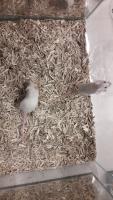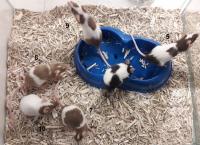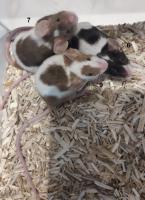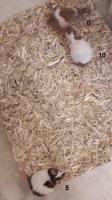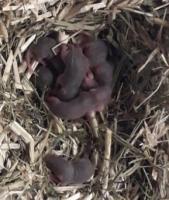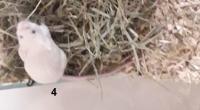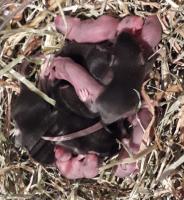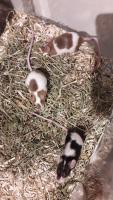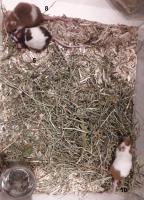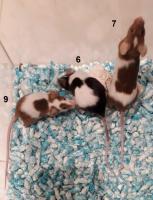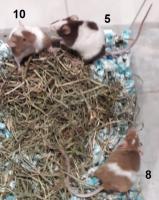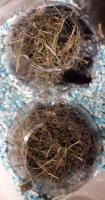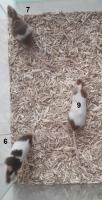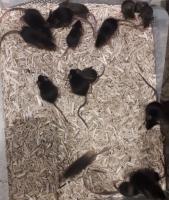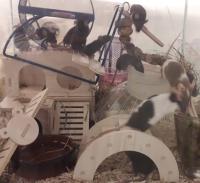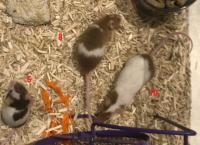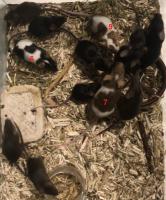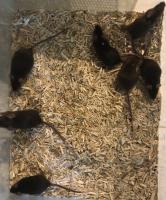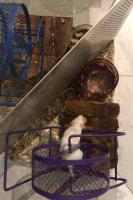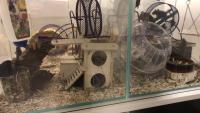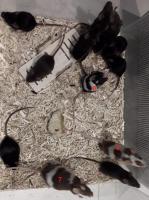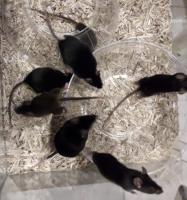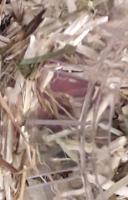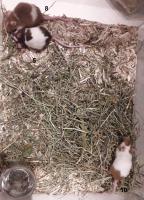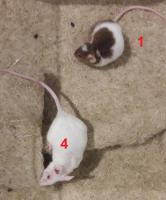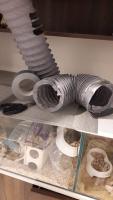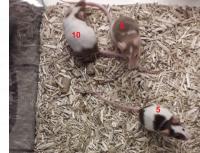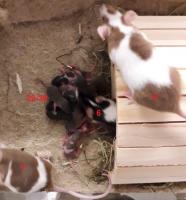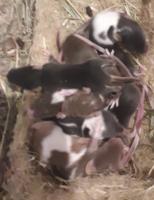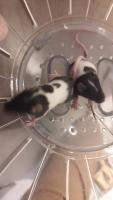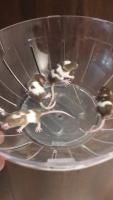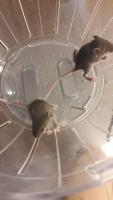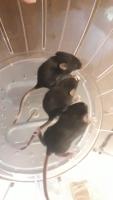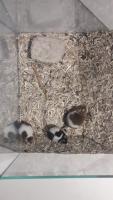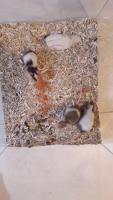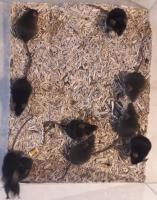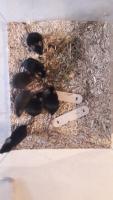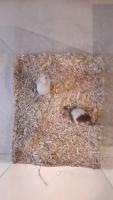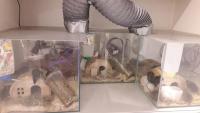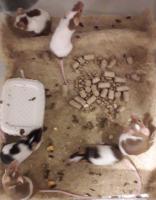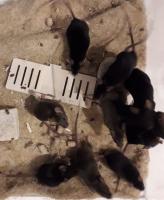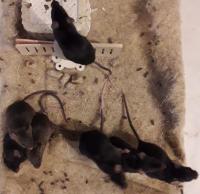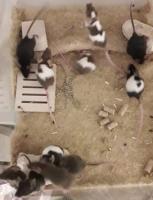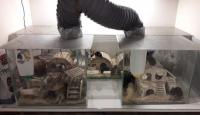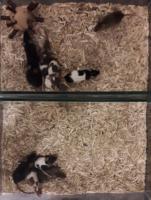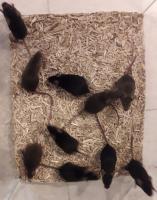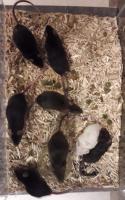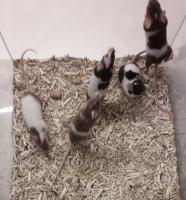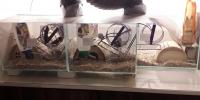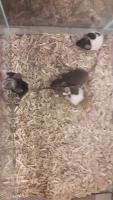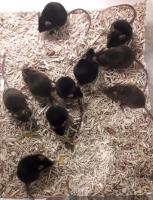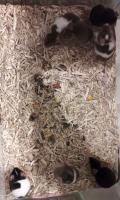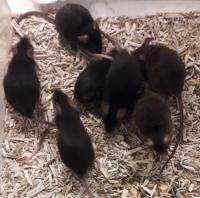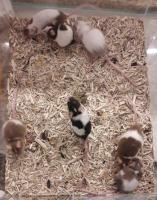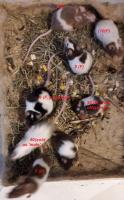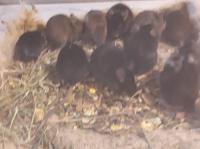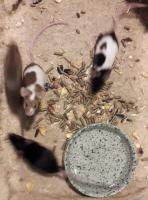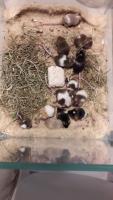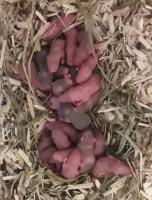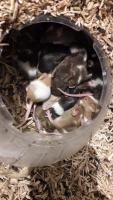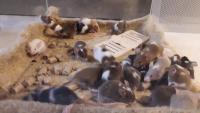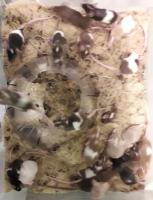The 12 newborns (yes, there are 12, I wasn't sure in the last post as I was counting them from far)
appear to have a diversity of colors. This is what I was hoping (also for the first series of newborns...)
We see them here with their biological mother (#7), their grand-mother and possibly aunt (#6),
and another possible aunt (#9). The three "mothers" (who were bought together from a crowded cage at a petshop)
take approximately equally care of the newborns, just as they did for the first series.
The father is one of these 7 males, from the first series of newborns:
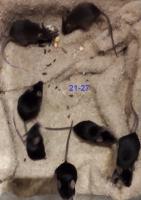
Here are the 10 females, from the first series of newborns:
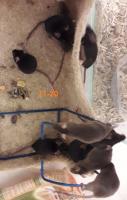
Interestingly, 4 of them are gray.
Here are the three other friends/sisters of females 6 7 9:
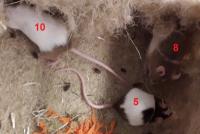
I did not take in picture the couple that will not have babies it seems
Here is the installation with all the mice:

Behaviors:
I modify the organization of cages every week because it keeps them extremely curious and makes them happy.
They seem to like these houses very much; and this hemp litter very much because they can fold it in tunnels
and pull fine fibers from extremities to make comfortable beds and block the entrance of houses.
They prefer to run in the wheel but exceptionally I moved some wheel out of its support for them to investigate.
Adult mice start to all like me and want to crawl on my hand and arm, I avoid it for them not to get lost (nor fall one day!).
Among the males of the first generation, one of them was byting the ass of others and being quite mean at first
(sort of young-teenager behavior) and gradually it has transformed as a nice game, which other males now like.
Apart from this, they respeci each other very much.
Males want a bit more of challenge than females, so I have invented various challenges,
the one in the air on the top right is their preferred one (a suspended platform that flips when climbing on bars;
they hand on the platofm and bars in order not to fall and try again).
They gradually coordinate across each other inside wheels, to do loops.

































